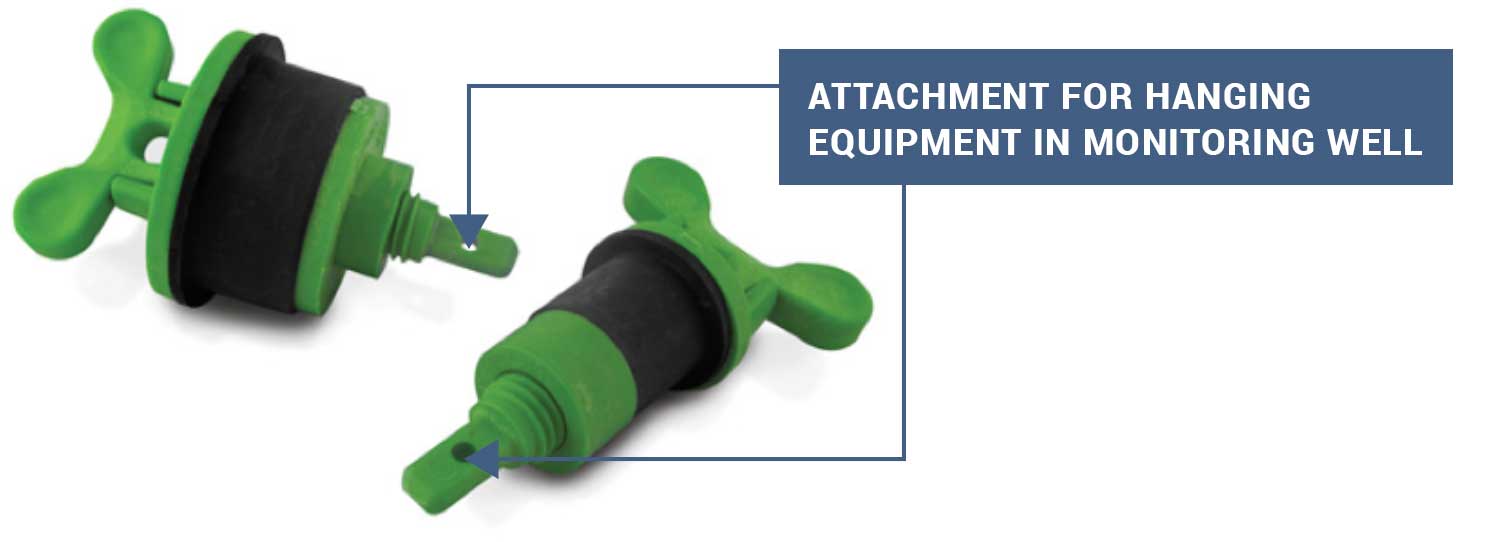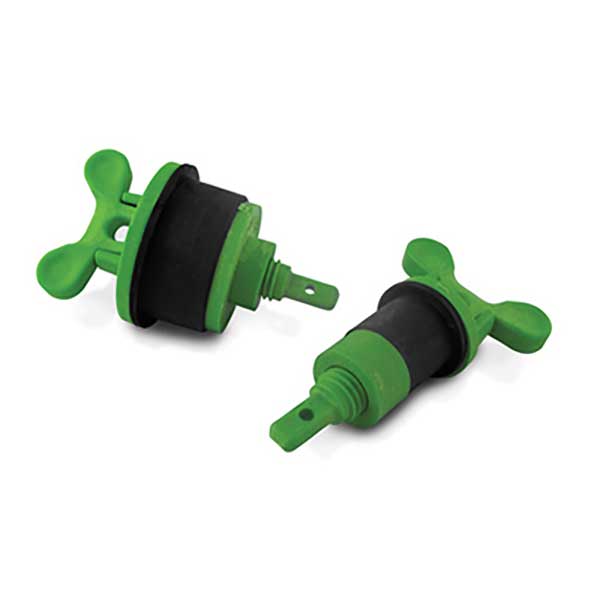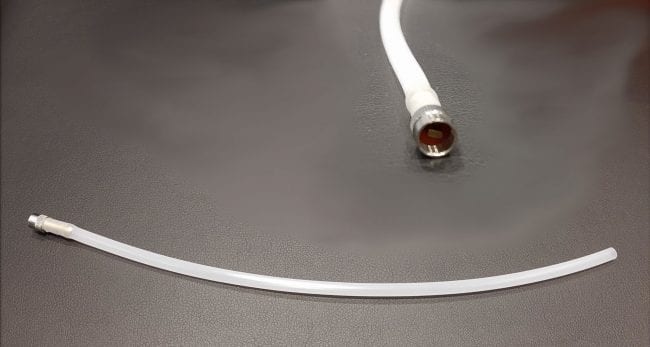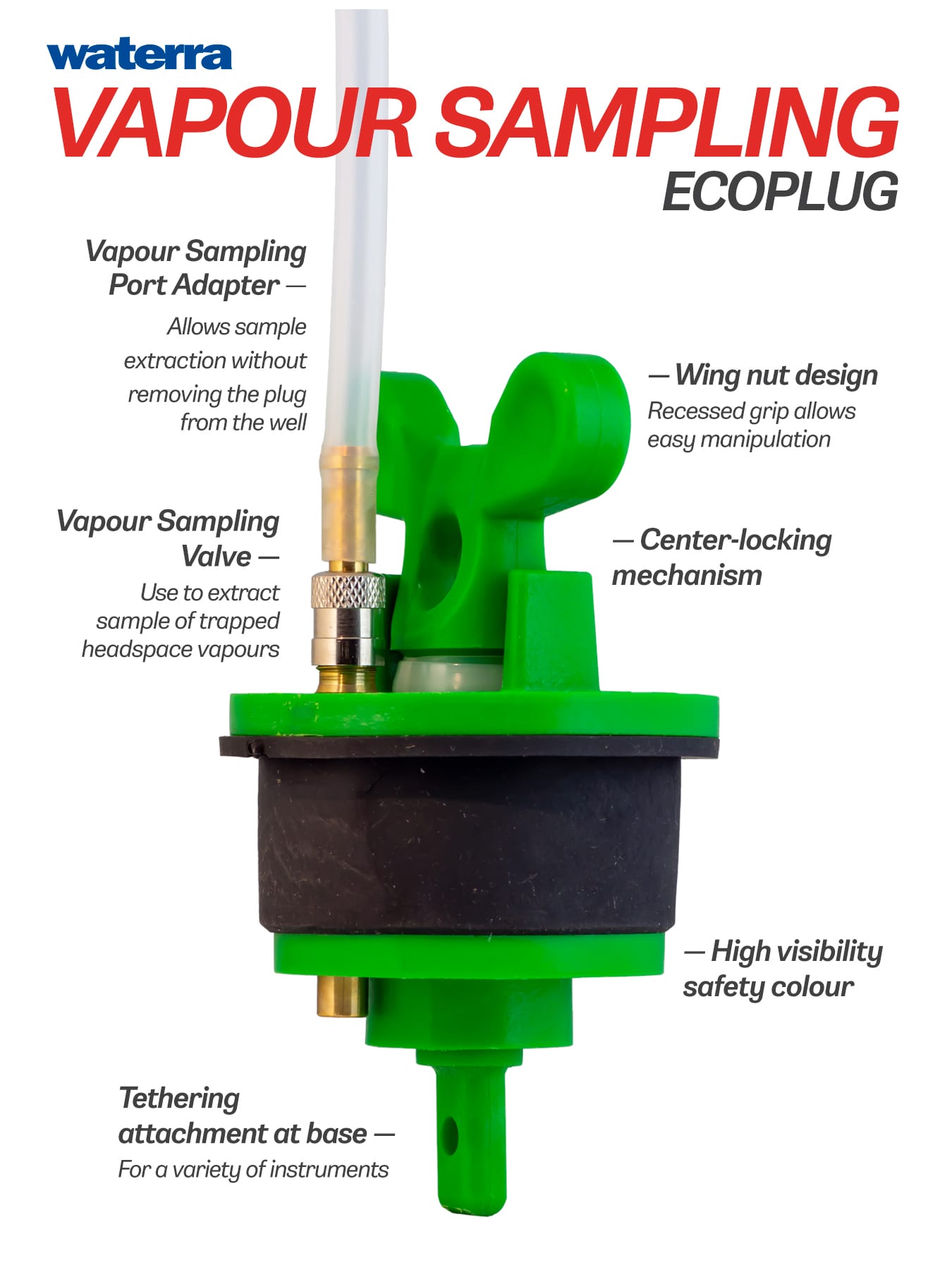How to Plug and Cap Monitoring Wells
Use Well Plugs
How to Plug and Cap Monitoring Wells is a key element of any groundwater monitoring program. Monitoring wells should always be plugged / capped in order to prevent foreign material from contaminating the well. Blind end caps are available at pipe suppliers and some hardware stores but Waterra carries EcoPlug and Torquer Well Plugs are purpose built and more secure.

Waterra carries Well Plugs that are available in Vented and Non-vented configurations.
- Suitable for most 1, 1.5, 2, 3, 4 and 6 inch monitoring wells
- Plastic and rubber sleeve are non-corrosive
- Relatively inexpensive
- Choose a 1, 2 or 4 inch EcoPlug to match your well diameter or
- Choose a 1.5, 3 or 6 inch Torquer well plug
- Insert the Well Plug into the top of the monitoring well
- Push the Well Plug down into monitoring well so that the top plate rests on the lip of the well pipe
- Turn the top handle clockwise so the screwing action squeezes the rubber sleeve tight against the inside of the monitoring well pipe
- Insert a padlock through the hole and under the handle to lock your well.
Waterra Words of Wisdom
- Available in vented configurations for vapour sampling
- May not be suitable if there is little head room under a manhole cover or in a snug protective casing.
- Provides fastening points for equipment that may need to be suspended in the well.
- Note, Schedule 40 versus Schedule 80 pipe if you are going the blind end cap route
-
This product has multiple variants. The options may be chosen on the product page
Lockable Well Plugs (non-vented)
$USD 6.32 – $USD 48.95 -
This product has multiple variants. The options may be chosen on the product page
Vapour Sampling Well Plugs from Waterra
$USD 35.60 – $USD 75.03



